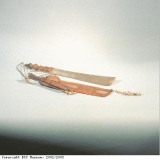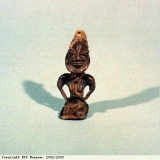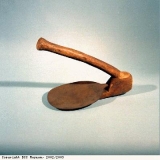The cultures of Africa
Africa has a long and diverse cultural heritage. Over the huge continent, many different cultures have developed. Some of these were organised in big empires, others as smaller, loosely organised communities.
The rulers of great states in West Africa, like the emperor of the Songhai empire and the king or oba of Benin, ruled over large areas and many people. In some states, chiefs held power locally, but were under the authority of the royal family who ruled the state. Olaudah Equiano, a well-known freed slave who wrote his life story, was from an area that was ruled by the oba (or king) of Benin. Even so, ‘every transaction of the government … was conducted by the chiefs or elders of the place.’ Small communities by contrast organised themselves at village level, and were run by the ‘elders’. These were the older members of the community who were respected for their age and wisdom and tended to be decision makers.
Large states with cities at their centre, such as Benin (part of Nigeria today) in West Africa, governed a large population. An English writer, Malachi Postlethwayt, wrote in 1746, ‘… the town of Great Benin… is 11 miles in circumference… and is said to have above 100,000 inhabitants.’ It is estimated that Bristol had about 50,000 inhabitants at this time. This made the population roughly half the size of Benin’s. Postlethwayt may have heard exaggerated stories about the place, but Benin City was a great city. It had a very organised social and political system. The oba, or king, was at the top and slaves were at the bottom. The state had a large royal court, consisting of the oba, his nobles, ministers, advisers and their families, with specialised craftsmen producing items for the court. Carvers made items from wood and ivory, such as furniture and ceremonial items. Brassworkers cast objects in brass to decorate the palaces and for use in ceremonies. This sword is from the Asante people of the Gold Coast (it is Ghana today). The sword is an example of the beautifully made items that were available to people such as kings and chiefs. It is made from iron with brass decoration and has a sheath of wood decorated with shells. The red shell was rare and expensive, suggesting that a person of importance owned this sword.
The status of chiefs in African societies was shown by a proverb, or saying, from the Congo, in Central Africa. The proverb says: ‘If you disobey the chief, you disobey the state’. The chiefs and elders (older people in the community who were decision-makers) were usually all-powerful. Shown here is an edan figure. It is a carved figure belonging to the Ogboni society. This is a powerful group of the wisest men and women elders in the community from the Yoruba people of Nigeria. The group would act as the judge on cases of anti-social behaviour, such as stealing. The edan figures, like this one, were a symbol of their authority.
Some of the West African states were largely agricultural, and the people who lived there were farmers. Olaudah Equiano said that in his village ‘Agriculture is our chief employment, and everyone, even the children and women, are engaged in it.’. Equiano came from a village of the Igbo people, in what is now Nigeria, West Africa. Pictured here is a hoe, a tool used to work the soil, from the Igbo people. Other West African states depended more on trade rather than farming. In these states many people lived in towns rather than villages, producing or processing the goods for trade. Work in the home was done by women, in addition to their work in the fields or the marketplace.





